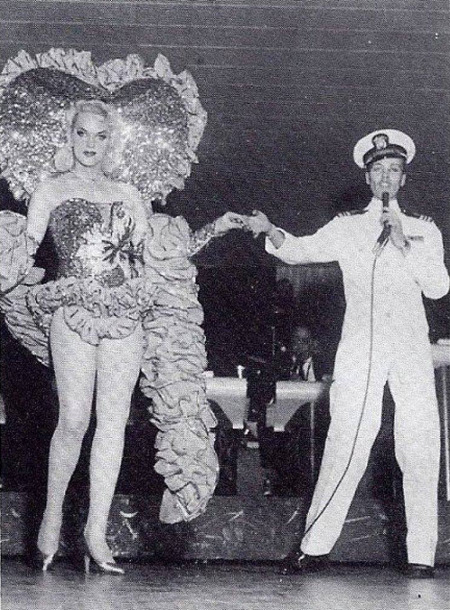

She fought fiercely against the abuse that she herself had faced to protect the generations of LGBT+ people to come. In a society that demanded conformity, Stormé DeLarverie epitomized duality, refusing to adhere solely to whiteness or Blackness, femininity or masculinity. By her bed, she kept her photos with younger gay friends, all of whom she spoke of as her “children.” She died in 2014 of a heart attack at the age of 93. She became a guardian of the younger LGBT+ community of New York, patrolling the city to watch for any harassment or mistreatment of young lesbians, whom she referred to as her “baby girls.” She instinctively defended and assisted all who needed it, providing to them the protection that she herself had lacked in her youth.ĭeLarverie spent her later years in a Brooklyn nursing home under the care of her mentee Lisa Cannistraci and longtime friend Michele Zalopany. DeLarverie herself became so admired that she socialized among artists like Dinah Washington and Billie Holiday.Īfter Stonewall and the death of her girlfriend Diana–with whom she had lived for 25 years–DeLarverie worked as a bodyguard and a bouncer for lesbian bars. The troupe drew large, mixed-race audiences and performed in New York City and around the country at venues such as the Radio City Music Hall, the Apollo Theater, and the Copacabana.
She was the only woman among the 26 performers, yet her male impersonation was so convincing that the audience usually did not realize until she revealed her gender at the very end of the performance. She worked as a bodyguard in Chicago, then made the decision to perform as a drag king with the renowned Jewel Box Revue, the only racially integrated drag troupe of the time. Her father sent her to a private school for a few years, hoping she could receive an education in a safer environment.Īt the age of 18, DeLarverie realized that she was lesbian and consequently moved to Chicago, fearing the threat of hate crimes in the South. In a documentary by Sam Bassett, DeLarverie recollected, “When the Black kids weren’t chasing me, the white kids were chasing me, and if they weren’t, the dogs were chasing me…” She learned, too, to defend herself against such persecution, fighting back when the bullying became too brutal to bear. Stormé DeLarverie had just triggered the Stonewall Rebellion, the aftershocks of which would shake the United States and set in motion the gay rights movement.īorn in Louisiana in 1920 to a wealthy white man and a Black woman who worked for his family, DeLarverie experienced more than her fair share of exclusion since her early childhood. When she punched him back, the transfixed crowd erupted into what would become two nights of riots against police brutality and homophobia. Learn more about Tourmaline and “Happy Birthday, Marsha!” here, here and here.A little after midnight in New York City, a police officer yelled, “Move along, f*ggot!”Įnraged, the officer raised his baton and struck her in the face. However, David Carter disagrees with this, adding that all the witnesses he interviewed for his research describe the woman in. Tourmaline is also a model and a scholar. David Carter states in his book, Stonewall: the riots that sparked the gay revolution, that Charles Kaiser, author of The Gay Metropolis, 1940-1996, asserts that it was in fact Storm DeLarverie who started the riots. Storme Delarverie, a biracial lesbian drag performer is considered to be the. Johnson’s life, just hours before the Stonewall Riots took place. And just like that, on 28th June 1969 at The Stonewall Inn, the police. Tourmaline - Tourmaline is an activist and filmmaker, most known for her film “Happy Birthday, Marsha!,” which follows a fictionalized version of Marsha P. Learn more about Marsha, here, here and here. She’s also credited with helping to ignite the Stonewall Riots. Along with Sylvia Rivera, she helped found STAR - an effort to help house homeless trans people - and was prominently involved in AIDS activism in the 80’s. Johnson - Marsha “Pay It No Mind” Johnson was a Stonewall veteran, an activist and performer. Learn more about Storme here, here and here.

As Kay mentions, she was most known for her community policing - walking along in the village making sure no one harassed members of the community. Storme DeLarverie - Storme was a Stonewall veteran and activist and rumored to be the person to throw the first punch and actually ignite the riots. Learn more about Sylvia here, here and here. She helped found STAR - an effort to help house homeless trans people.
Sylvia Rivera - Sylvia Rivera was a Stonewall Veteran and activist, who fought tirelessly for the rights of trans people, people of color, low-income and homeless members of the lgbtq+ community, all groups who were purposely pushed out of early gay rights organizing.


 0 kommentar(er)
0 kommentar(er)
